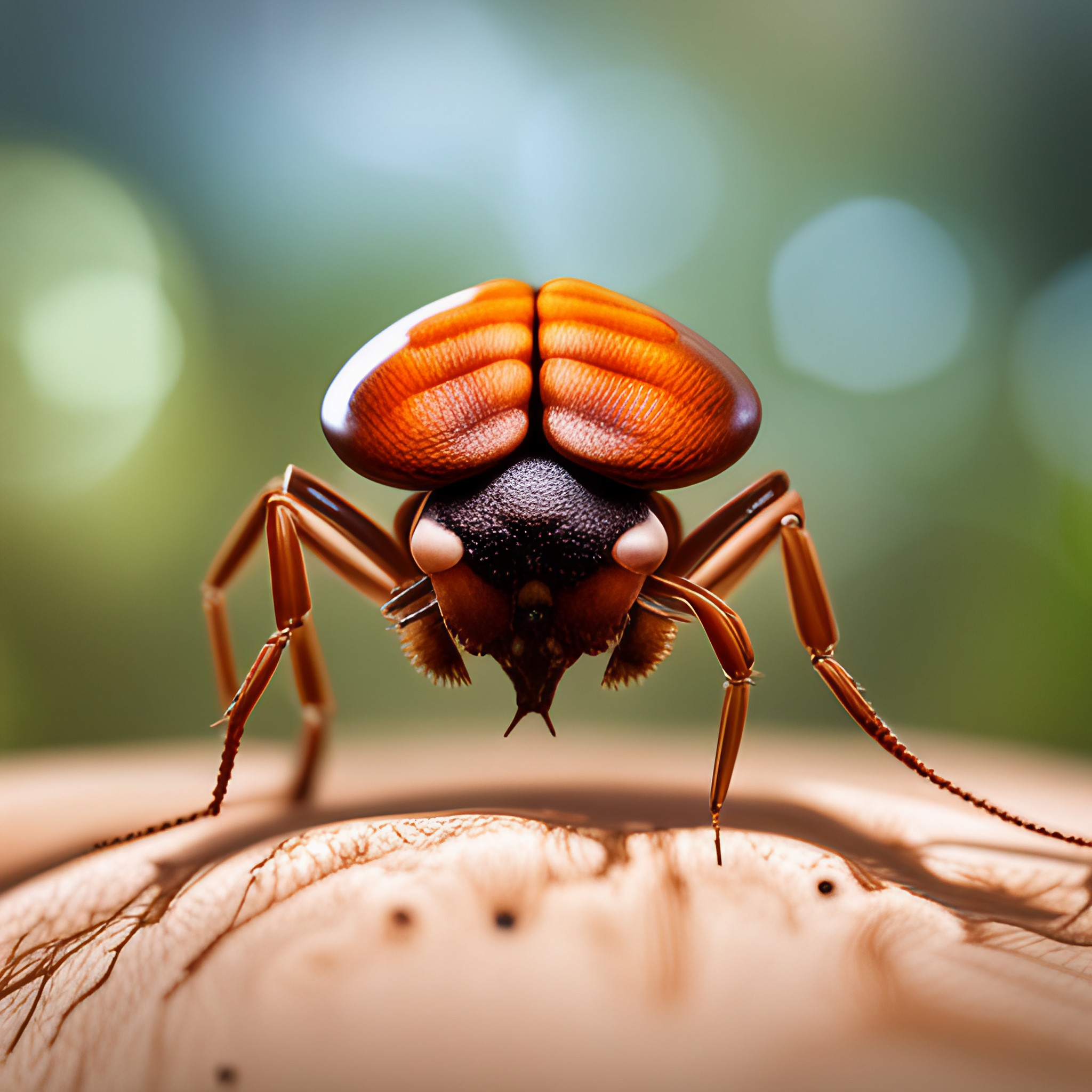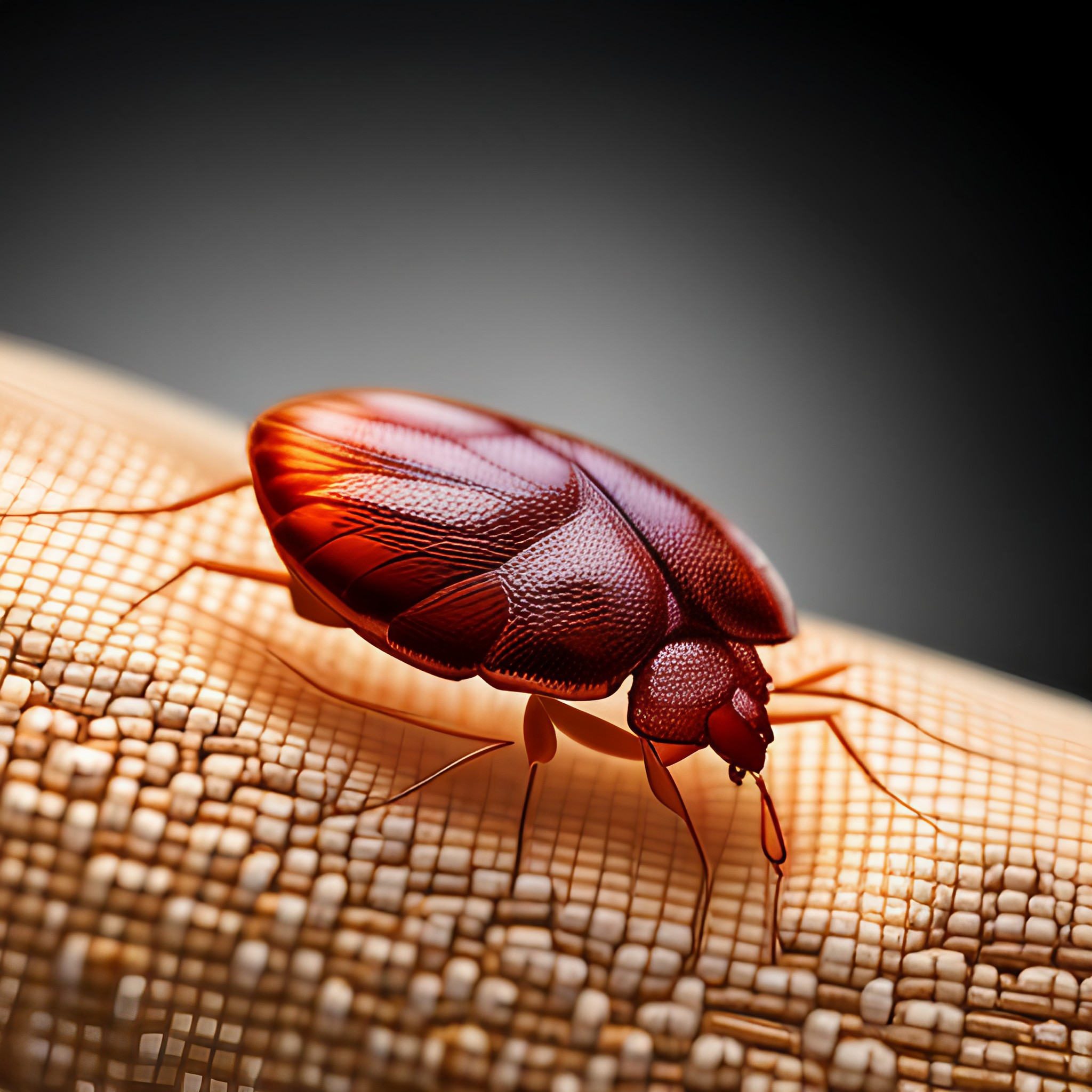One morning, as I woke up and turned on my lights, I spotted tiny red spots on my sheets. Blaming it on my clumsiness the night before, I cleaned up the marks only to find similar ones the next morning. Curiously, I started looking around my bed and found myself face to face with bed bugs. These tiny insects are infamously known for their widespread bed bug infestations, feeding off of human blood, and leaving behind itchy bed bug bites. The discovery left me feeling disgusted and frustrated. These bloodsuckers are incredibly difficult to get rid of, as bed bugs travel easily from one place to another. In this article, we will explore everything about bed bugs, their behavior patterns, and most importantly, how to get rid of them once you have been targeted by their bite.
Bed bugs (Cimex lectularius) are small, oval, brownish insects that live on the blood of animals or humans. These pests are often associated with unsanitary conditions, but in reality, they can also thrive in clean environments.
Life Cycle and Habits Bed bugs have a lifespan of about 4-6 months, depending on the environment and feeding frequency. They undergo five nymph stages before reaching adulthood, molting after each stage. Adult females can lay hundreds of eggs over their lifetime, with each egg about the size of a speck of dust. Bed bugs are primarily nocturnal, emerging from their hiding places at night to feed on their hosts.

Where Do They Hide? Bed bugs are experts at hiding. They often reside in cracks, crevices, mattress seams, electrical outlets, and even behind wallpaper. Their flattened bodies allow them to fit into tiny spaces, making it challenging to detect them.
COMMON SIGNS OF A BED BUG INFESTATION
Detecting a bed bug infestation early can save homeowners a lot of time, money, and stress. While these pests are elusive, there are tell-tale signs to watch for.
1. Bites on Skin: Bed bug bites often appear as red, itchy welts. Though not everyone reacts to their bites, those who do might notice patterns or lines of multiple bites.
2. Fecal Spots: Bed bugs excrete small black or dark brown fecal spots on mattresses, bedding, or nearby furniture. These spots can be mistaken for dirt but smear when touched.
3. Blood Stains: Occasionally, you might find small blood stains on your sheets or pillowcases, resulting from bugs that have been crushed during the night.
4. Egg Shells and Shed Skins: As bed bugs grow, they shed their skins, which can accumulate in their hiding spots. Look for translucent, pale yellow skins and tiny, pale yellow eggshells.
5. Unpleasant Odor: In areas with a heavy infestation, bed bugs may produce a musty, sweet smell, similar to the scent of raspberries or moldy shoes.

WHAT TO DO IN CASE OF BED BUG INFESTATIONS
If you suspect or have confirmed that you have a bed bug infestation in your home, it’s important to take immediate action. Bed bugs tend to reproduce rapidly and can lay up to 500 bed bug eggs in their lifetime. The first step is to identify the areas where the bed bugs are hiding and remove any clutter or debris. Female bed bugs tend to lay their eggs in cracks and crevices, so it’s essential to vacuum and clean those areas thoroughly. The next step would be to invest in professional pest control services or purchase a bed bug killer to help control the infestation. It’s important to follow the instructions and use the necessary precautions when dealing with bed bugs. Don’t take the infestation lightly, as it can spread quickly. Take action as soon as possible to eradicate the bed bugs and prevent any further infestations.

FAST WAYS TO GET RID OF BED BUGS
Bed bugs are notoriously resilient pests. However, with diligence and the right methods, you can eliminate them quickly.
1. Professional Exterminators: A surefire way to tackle an infestation is to hire professional pest controllers. They have access to treatments that are not readily available to the public.
2. High Heat: Bed bugs cannot survive temperatures above 120°F (48.9°C). Washing bedding and clothes on the highest heat setting and drying them similarly can kill these pests. Additionally, professional-grade steam cleaners can be used to treat mattresses and furniture.
3. Encasements: Using bug-proof mattress and box spring encasements can trap bugs inside and prevent them from entering or exiting.
4. Diatomaceous Earth: This natural, powder-like substance can be sprinkled around bed frames, baseboards, and other hiding spots. It acts as a desiccant, dehydrating and killing the bugs.
5. Vacuum Regularly: Regular vacuuming can help remove bugs and their eggs. Always ensure to seal and dispose of the vacuum bag immediately.
6. Pesticides: There are specific insecticides formulated for bed bugs. However, improper use can be dangerous and may cause bugs to scatter. Always read the label and follow safety precautions.
While these methods can help eliminate bed bugs, the key is persistence and regular monitoring. Due to their resilience, it often requires a combination of methods and repeated treatments to completely eradicate an infestation.

BED BUG BITES
Bed bug bites can have multiple effects on people, and the severity of these effects can vary greatly from person to person.
Some people may experience no reaction to bedbug bites, while others may have an allergic reaction that can include severe itching, blisters, or hives. The bites often lead to sleep deprivation due to itching, stress, and anxiety inside of your bedroom after finding an infestation.
For those who are allergic to bed bug bites, they may experience hives, rashes, itching, and burning sensations. Bed bug bites usually cause itchy welts, and these welts often appear in a zigzag pattern.
Symptoms of bed bug bites can also include skin irritation, sores, or itchiness. It can also affect a person’s sleep and may increase the risk of a skin infection.
Reactions to bed bug bites typically include hives, asthma, and in rare occasions, anaphylaxis. In addition, constant scratching of lesions caused by bedbug bites may lead to secondary infections.
In some cases, bites could lead to hives, blisters, or intense itching. Allergies to the bite, caused by bed bug saliva, can trigger hives, rashes, itching and burning. Bites can become infected, causing additional health issues.
Overall, bed bug bites look like small, swollen red spots and are very itchy.
Please consult with a healthcare professional if you suspect you have been bitten by bed bugs.
FAQ
ARE BED BUGS DANGEROUS
Bed bugs are not known to transmit diseases to humans, so in that sense, they are not considered dangerous. However, their bites can cause discomfort and lead to secondary complications.
Here’s a more detailed breakdown:
Allergic reactions: Some people may have an allergic reaction to bed bug bites. This can range from mild itching and redness to severe anaphylactic shock, which is a medical emergency.
Secondary infections: Constant scratching of the bites can lead to skin damage and secondary bacterial infections, such as impetigo, ecthyma, and lymphangitis.
Insomnia and anxiety: The knowledge of being bitten can lead to emotional distress and sleep deprivation, which are serious health issues over time.
Anemia: In extreme infestations where a person is bitten a significant amount, there is a risk of iron deficiency anemia.
While bed bugs are a nuisance and their bites can lead to health complications, it’s important to note that they are not known to transmit any diseases. However, their presence can significantly impact a person’s quality of life, and professional pest control measures should be taken if an infestation is suspected.
ARE BED BUGS VISIBLE?
Yes, bed bugs are visible to the naked eye. Adult bed bugs are usually brown in color, and their color can range from red to dark when they are filled with blood. They typically don’t grow much longer than 0.2 inches (0.5 centimeters).
However, it’s important to note that while bed bugs are visible, they are often hard to spot because they are very good at hiding. They have a high affinity for darkness and wood. Bed bugs usually hide in small cracks and crevices close to a human environment, and they can be found behind baseboards, wallpaper, upholstery, and in furniture crevices.
Bed bug nymphs (young bed bugs) and eggs can be harder to see and may require a magnifying glass to spot. Eggs that are more than 5 days old have a darkened eye spot, but this detail can only be seen under a microscope.
Therefore, while bed bugs are technically visible, their small size and tendency to hide can make them challenging to detect without close inspection.
CAN BED BUGS FLY?
Bed bug infestations can be a major headache for homeowners. These pesky insects are nearly invisible, which makes it difficult to spot them. It’s important to know where to look if you suspect a bed bug problem in your home. While they can’t fly, they are quick movers and can hide in cracks and crevices throughout your bedroom. Be sure to check your bed sheets, mattress seams, and headboard for signs of adult or immature bed bugs. If you spot these small reddish-brown insects, it’s best to contact a pest control professional to remove them from your home properly.
BUGS IN BED
Bed bugs hide in various places in your home. These notorious pests can make themselves comfortable in your bed, dressers, couches, curtains, and even electrical outlets. While they are commonly found in spaces where humans sleep, they can also be found in other places, such as offices, public transportation, and movie theaters. Adult bed bugs are oval-shaped and dark brown in color, which allows them to blend seamlessly into their environment. They can be difficult to detect but their excrement, which looks like small black dots, is a telltale sign of their presence. If you suspect that you have bed bugs, it’s important to take action immediately and contact a professional exterminator to help you kill bed bugs once and for all.
IT IS SERIOUS
Bed bugs are pesky little insects that can make your life miserable. They are small, flat, and reddish-brown in color. Most commonly found in mattresses, box springs, and other furniture, they feed on human blood and can leave you with itchy, red bites all over your body. Inside box springs is a favorite hiding spot for bed bugs. These pests can easily slip into the cracks and crevices of a box spring and make themselves at home. It’s crucial to control bed bugs’ infestation right away as they can quickly spread. An adult bed bug is about the size of an apple seed, and they can be found in a variety of places, including cracks in the wall, electrical outlets, and furniture. Despite their name, bed bugs aren’t limited to the bedroom but can be found in any part of the house. While they are notoriously difficult to get rid of, identifying their common hiding spots can make the process a bit easier.
Bed bugs are an increasingly common problem that can wreak havoc on your home and your health. These pesky insects are attracted by warm bodies and carbon dioxide, which is why they usually bite people while they sleep. Bed bugs feed on blood meals, which can lead to a variety of health problems such as red, itchy skin and even an allergic reaction. They can also cause significant damage to furniture and bedding, and can be incredibly difficult to get rid of once they’ve infested a space. If you suspect that you have bed bugs, it’s important to act quickly and seek professional help to avoid further damage. Being proactive and taking steps to find bed bugs early can save you a lot of hassle in the long run.
